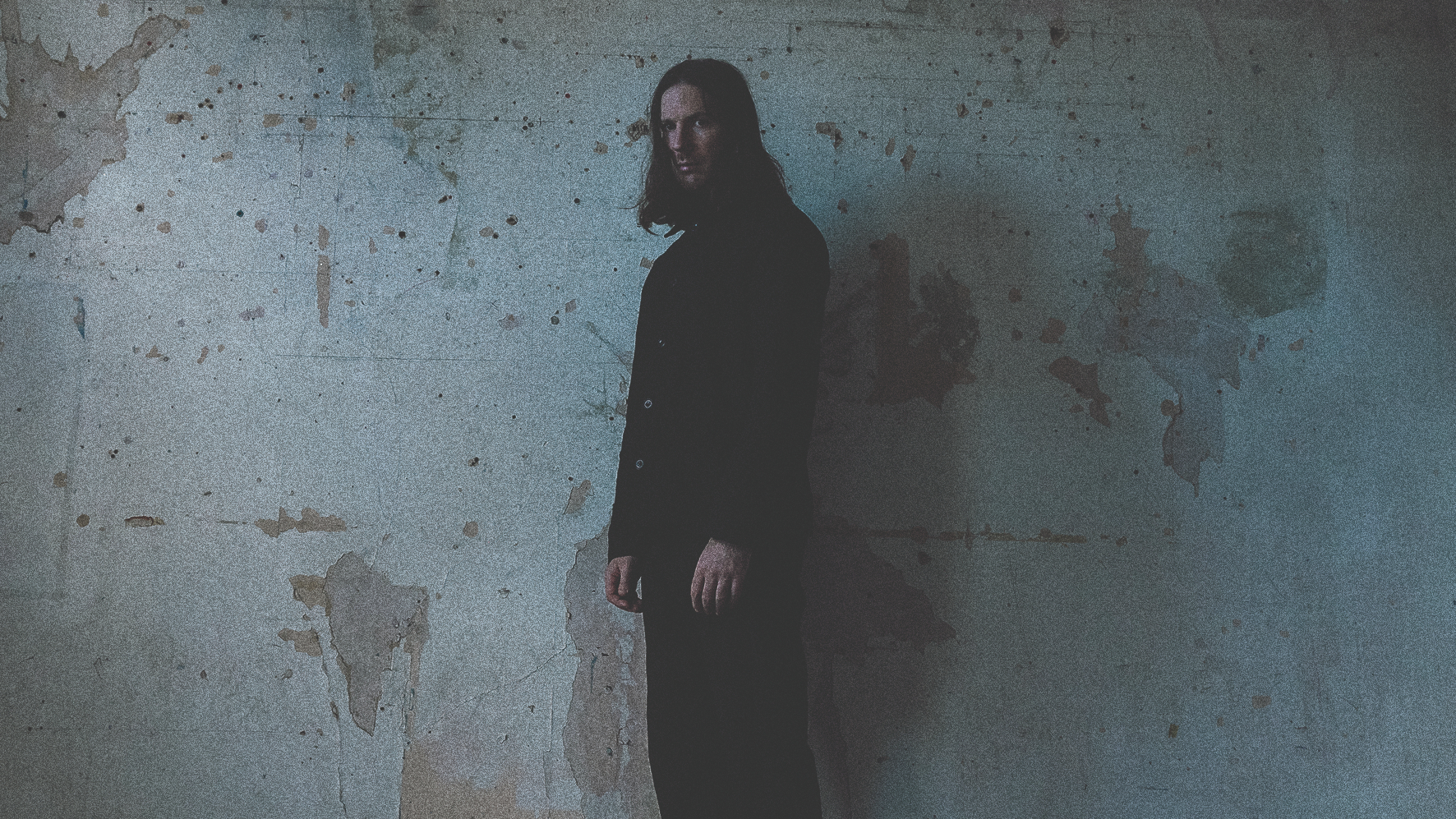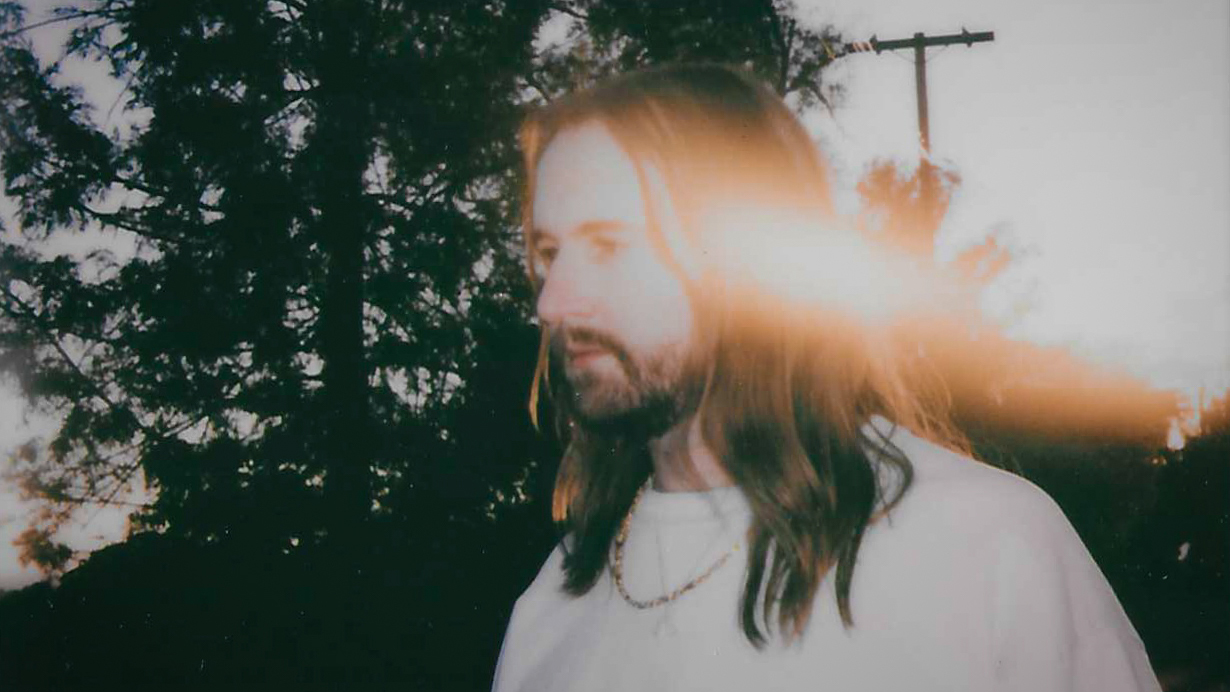Halina Rice: "You could spend ten years tweaking your live rig in your bedroom, but one gig will change the way you see and hear everything. There's no substitute"
A-V artist Halina Rice tells Martin Delaney about the evolutionary process that took her immersive live show from dream to reality
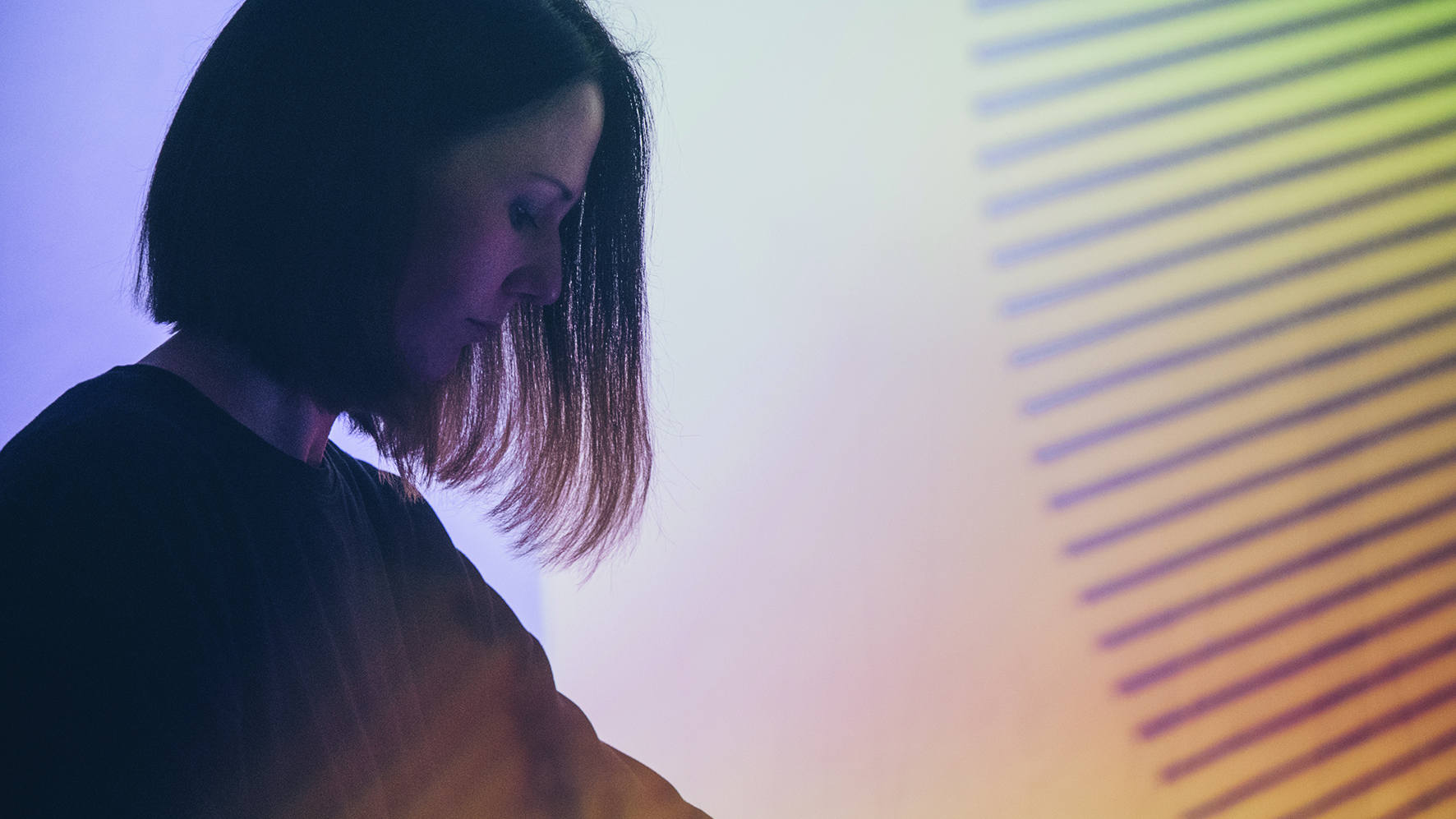
It doesn’t take much to put together your own music production setup now, and it doesn’t even need a dedicated room, maybe not even a whole table! We’ve all heard the stories about successful artists who thrive on simple home set-ups.
What’s even better is that the small production set-up can become the live rig as well. Even video, which used to be complicated and expensive, has become more democratic and accessible, as projects become ever cheaper, more reliable, and more portable. In fact, most venues have a projector now, and it’s usually just a matter of checking ahead regarding cables and adaptors for your computer.
Halina Rice is an outstanding example of an artist who endeavours to bring an immersive experience to venues where it might not otherwise happen, while also being able to scale it up further when required.
Visit one of her shows and you’ll be exposed to atmospheric IDM and carefully crafted sounds, some spacey, some beat-driven, while also witnessing a combination of programmed and real-time visuals, featuring mixed reality projections, haze, and DMX-controlled lighting.
This is a true A-V set, with all elements fully integrated and responsive. Something like this doesn’t happen overnight. Halina has invested time, money, and energy, into developing the sound and the show.
We talked to her about the concepts and techniques behind her original performances, while also getting some inside information about her complex setup.
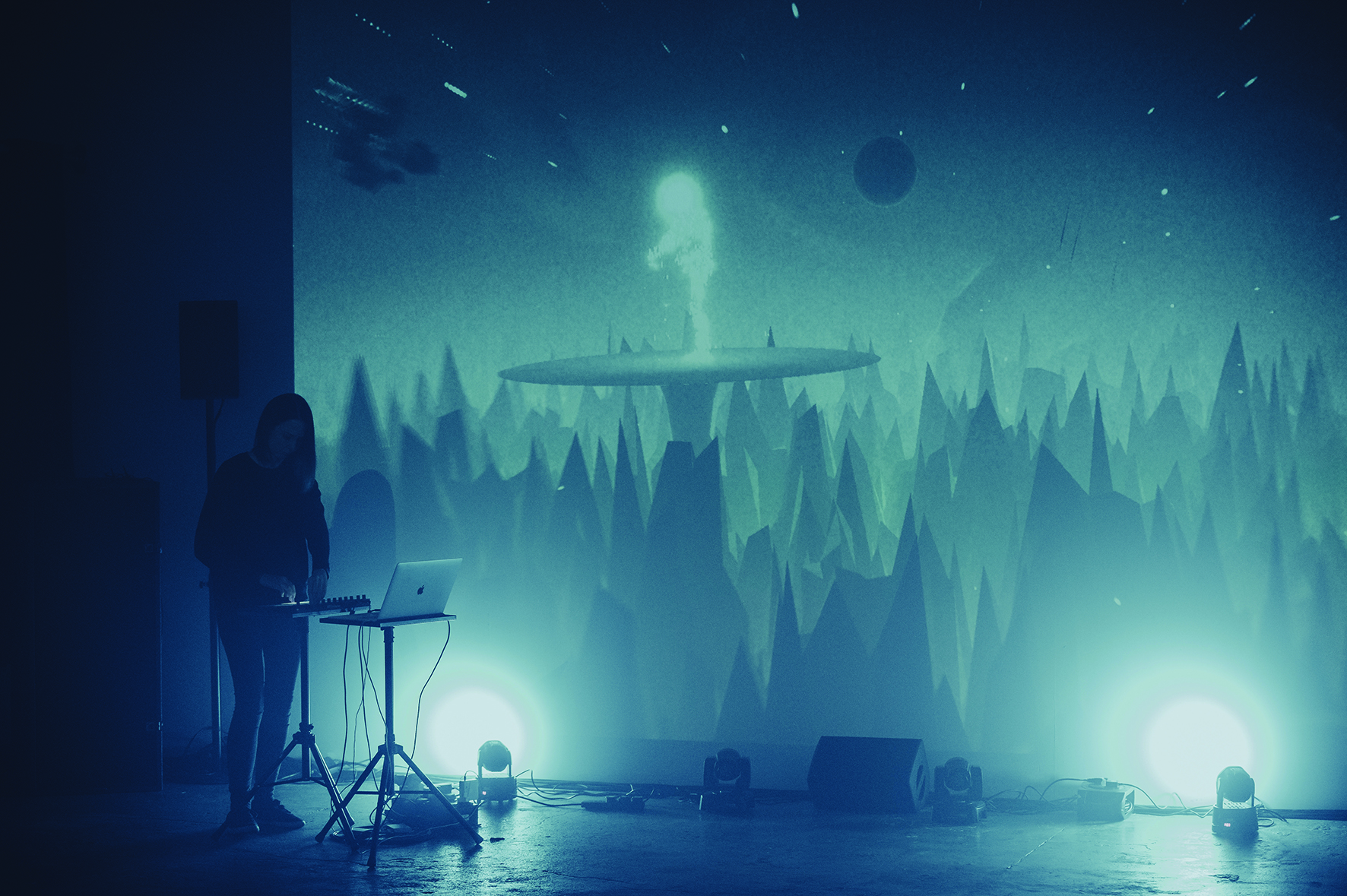
Visionary sounds
“An early influence for me was the artist Rival Consoles, who’s on the Erased Tapes label, and produces audio, but also programmes his visuals in Max/MSP. However, I’m equally interested in visual artists who cross over the other way to sound, such as Ryoji Ikeda, who created the Test Pattern show, most recently at 180 The Strand in London.
Get the MusicRadar Newsletter
Want all the hottest music and gear news, reviews, deals, features and more, direct to your inbox? Sign up here.
“This was primarily an installation that people can take part in, where there’s something like barcodes that are projected onto the floor and sound coming from all around, which appears to match the moving barcode type images. My first EP Krin came out in 2015, then the album Redux, in 2017. But I’d always really wanted to play live. I used Ableton Live and Push 1 at the time, and I was working with a VJ called Mowgli TV, who created beautiful monochromatic audio reactive visuals, that I was sending through Resolume, on the same laptop as Live.”
“When it comes to making new music, sound design is key. I often start by playing with sound, whether it’s with a virtual synth or an instrument – I still use Reaktor and Diva, for example – or manipulating a sample, or I’m inspired by another producer, and I’m inspired by their process. I may not succeed in emulating them, but I produce something else along the way. I’m interested in process and in other artists who use a particular process to develop their own instruments or their own way of organising or patterning sound.
“I’ve always had an interest in contemporary art. When I released my first EP, I contacted all the art colleges in London, to see if anyone would collaborate with me. And that resulted in collaborations with three visual artists doing their master’s degrees at the Royal College of Art, who each created a separate video in very different styles – one of them was Jan Petyrek, who I went on to work with.
“So I’m not the one who executes the visuals, it’s more of a thing about marshalling together the people you need to make it work. In my previous job, I ran digital operations and, while I don’t necessarily know and operate all the tech, I had to bring lots of different people with different skill sets together. Halina Rice is a team in some senses!
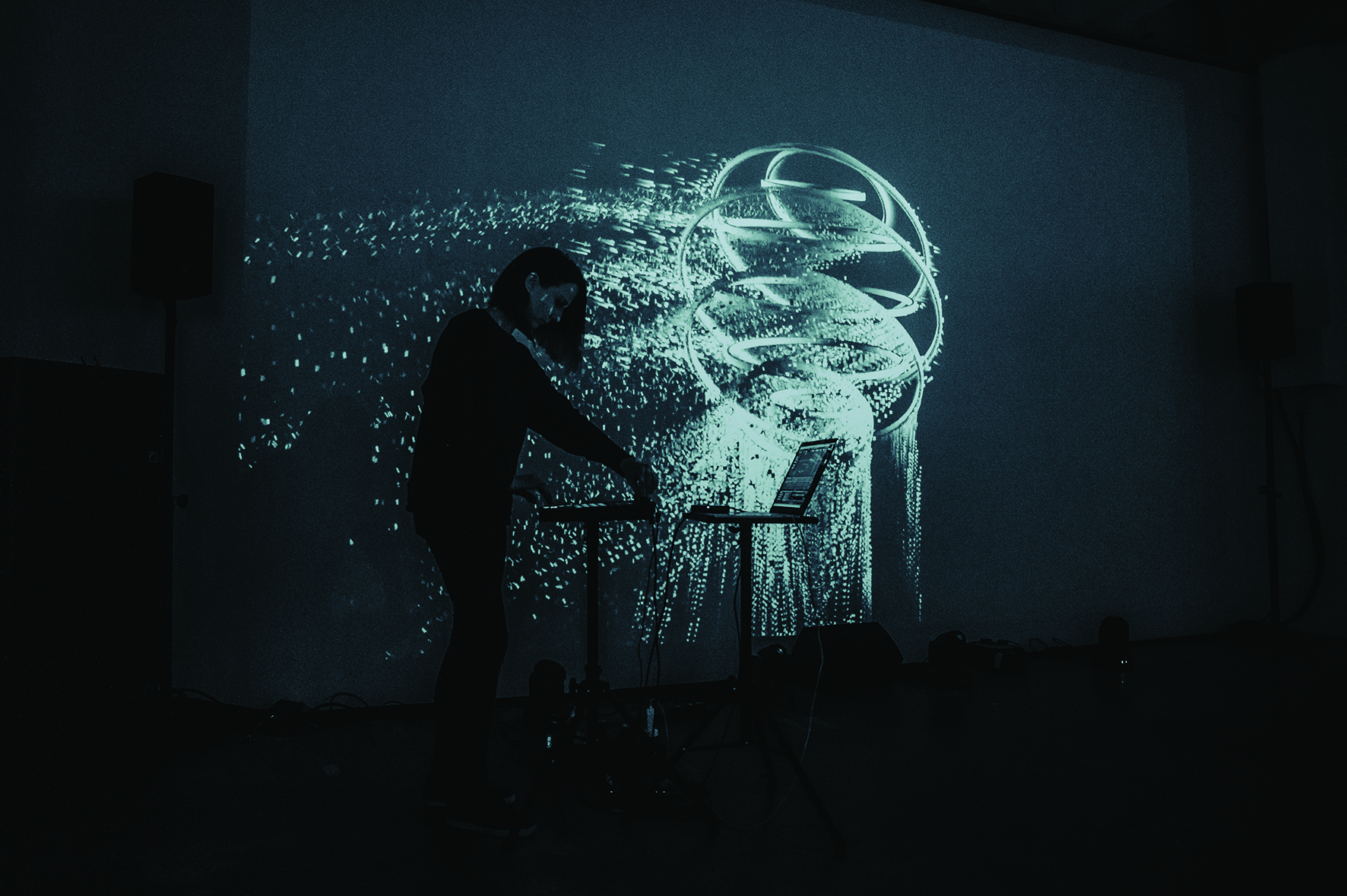
“In 2019 I had the opportunity to play at Abbey Road Studios at a hackathon event, so Jan and I used it as an opportunity to create an A-V show. The people from L-Acoustics were involved with the event, and in days leading up to it they helped me quickly reprogram the set for immersive sound. That was really exciting, it was kind of an embryonic version of the show that I’m doing now.
“Following that, we started working on further visual material in Unity 3D and Unreal Engine. Then in 2021, L-Acoustics released their new software suite called L-ISA Studio – inside that was the opportunity to use binaural monitoring, in order to hear 360 sound in your own home studio.
“I could literally mess around and experiment with that stuff at home. I felt I needed to show the performance in an environment where it wasn’t the environment that was stamping itself on me, I’m stamping myself on the environment.
“The tracks that I’m working with right now were not written originally with immersive sound in mind, but now I’d like to write specifically for 360, because it’s almost like you’re mixing in a 3D way. You no longer just mix left and right; you’re mixing for a room, and more with a group of people in mind. Another interesting point is that you need less compression on tracks because you’re mixing in 360 space, as opposed to mixing in a more linear way for two stereo channels.”
“When performing music in a new setup, whether surround or otherwise, I think it’s important to change what you do or to be flexible with what you’re doing. While it would be great to perform more regularly with immersive sound, it’s a tricky one, because there aren’t that many venues that have the speaker set-up; you have to bring it in. It’s great when you can, as it changes the whole feel of the event to the audience, they feel like you’ve gone out on a limb for them.”
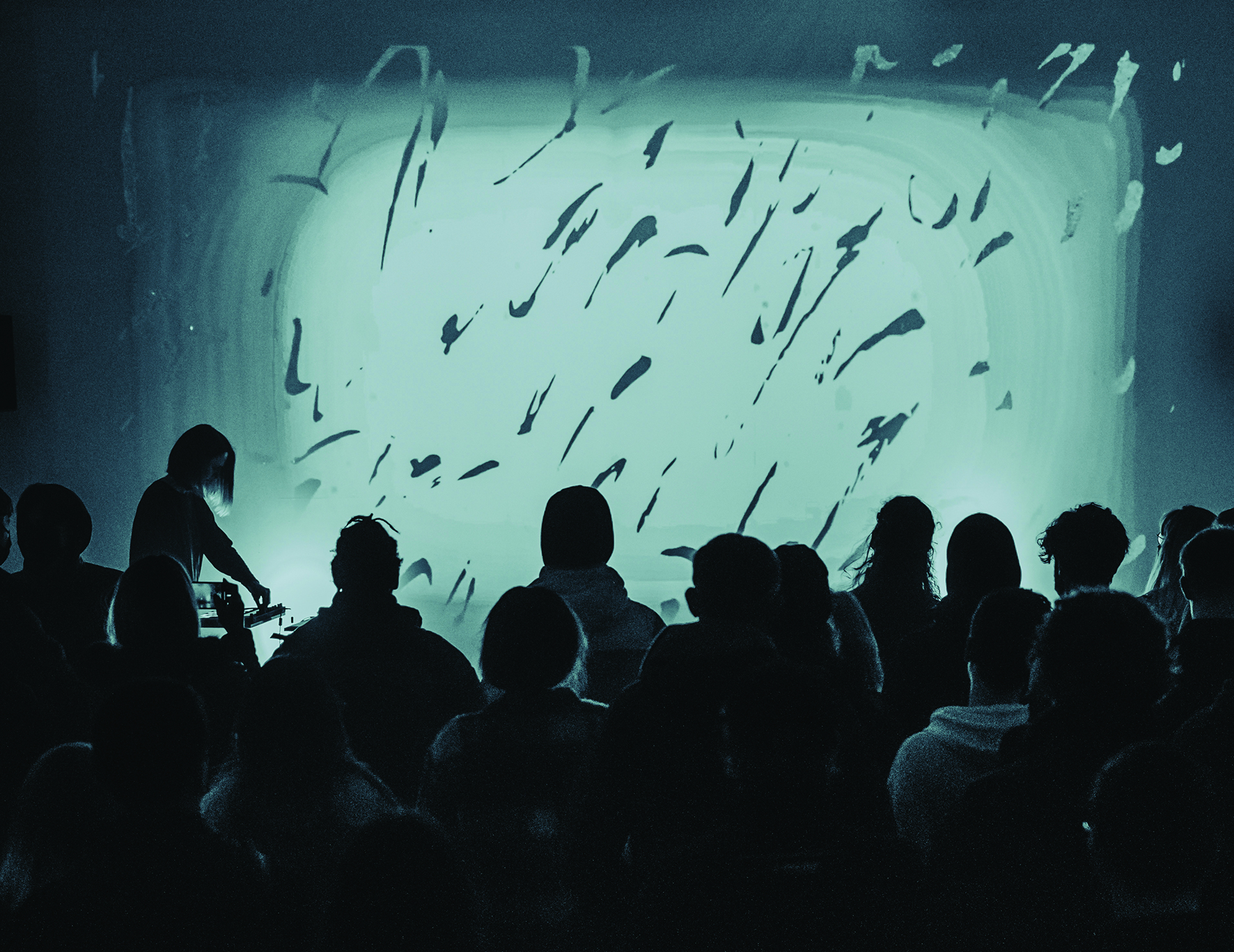
Get out there and do it
“There’s no substitute for taking your setup out there and playing some gigs; it’s the only way to truly get a handle on what works and what doesn’t. You could spend ten years tweaking your live rig in your bedroom, or on the living room floor, but just one gig will change the way you see and hear everything.
“This kind of revamp is part of the experience; nobody gets it right first time. These things can’t be done in a vacuum. And let’s not forget, artists are typically restless and inquisitive, and keen to move on to the next thing!
“There are always reasons to put off gigs as well – ‘I’m not ready, I don’t have the right gear’ – that kind of thing, but the bottom line is you need a computer, a controller, and an audio interface; that’s it.
“As far as software goes, you can use the ‘Lite’ version of a DAW that perhaps came bundled with your controller. Any developments or additions beyond that will be a matter of personal preferences, and experience gained over time, sometimes changes that only you will be aware of, while the audience are happy just to watch or dance.”
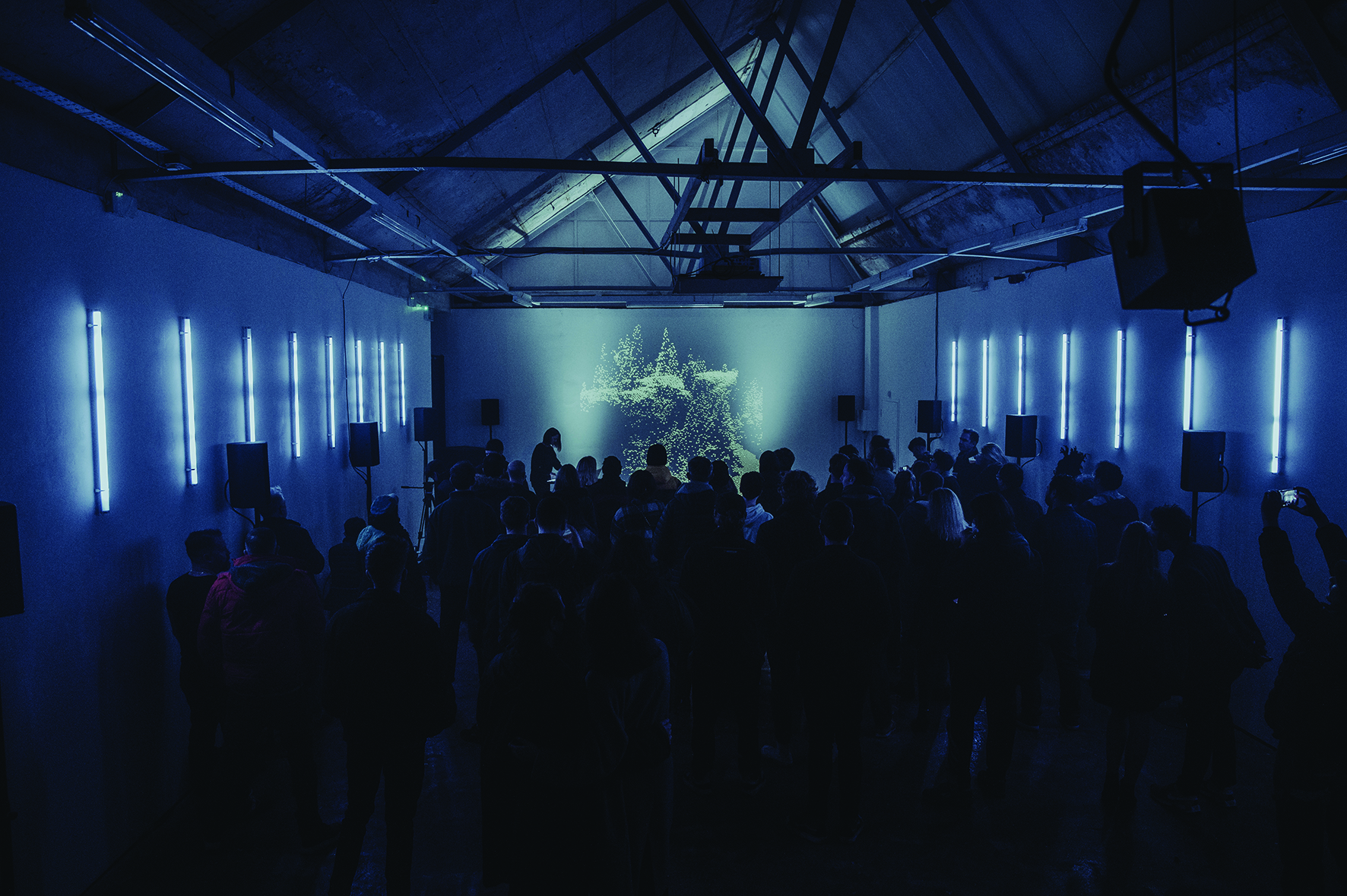
Pushing the Envelop
Halina’s live immersive audio is created using the L-ISA technology from the French company L-Acoustics. The L-ISA Studio software suite allows the creation and testing of surround environments on studio headphones or speakers with macOS, in a portable format without the need for cumbersome and expensive hardware, with control over parameters such as pan, width, distance, and elevation.
It can integrate with any major DAW software, as well as show control software and game engines. (Ableton Live Suite/Max For Live users can also look at the free/open source Envelop software tools. These can be used specifically with the Envelop network of dedicated spaces, both online and a physical location in San Francisco, or any other multichannel configuration. Like L-ISA Studio, Envelop is macOS-only).
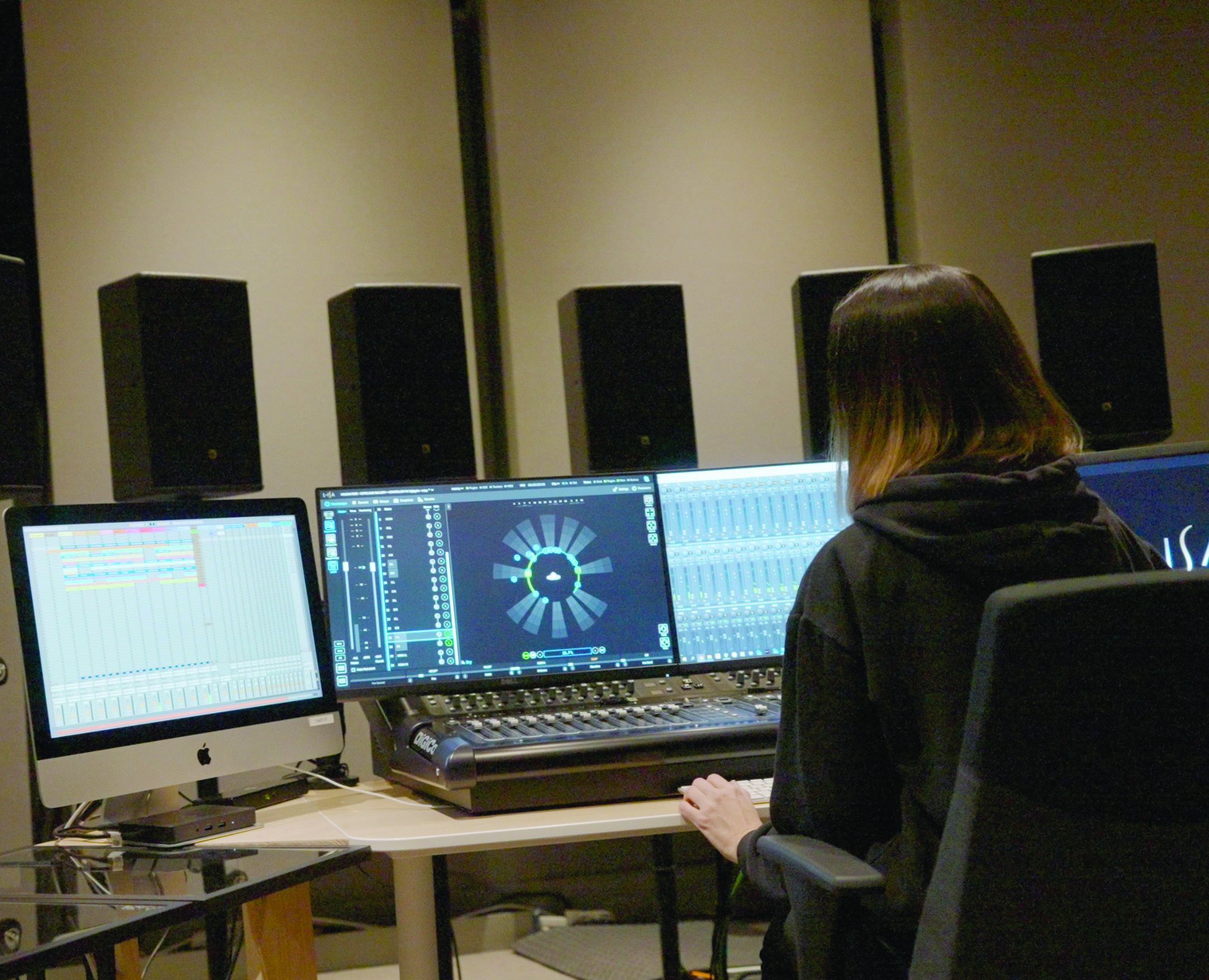
Despite the amount of technology that’s involved, Halina’s set is still very much live and interactive. “My Ableton Live project is the hub of it all. In Session View I’m working with between eight and ten stems and then have further virtual instruments and samplers set up up so that I can improvise over the top. On each track there’s the L-ISA Source Control plugin, which is used to communicate with the L-ISA Source Controller and position the sound in a 360 soundscape. I can position these live during the performance or, more usually, use automation.
“Using automation in Ableton clips is not the way everybody programmes for L-ISA, but for me this is the best way to control multiple sound sources. To create the automation I sometimes find it easiest to map the L-ISA parameters using a controller and record the automation directly. At other times I’ll draw movement in to make sure that it’s super-smooth.
“In terms of where you position sounds in the soundscape there are certain sounds, like some synth sounds, that you want across a number of speakers – so I would use width as a parameter in L-ISA to create this effect. Drums and percussion, you maybe want a little bit more pinpointed into particular speakers in the room.
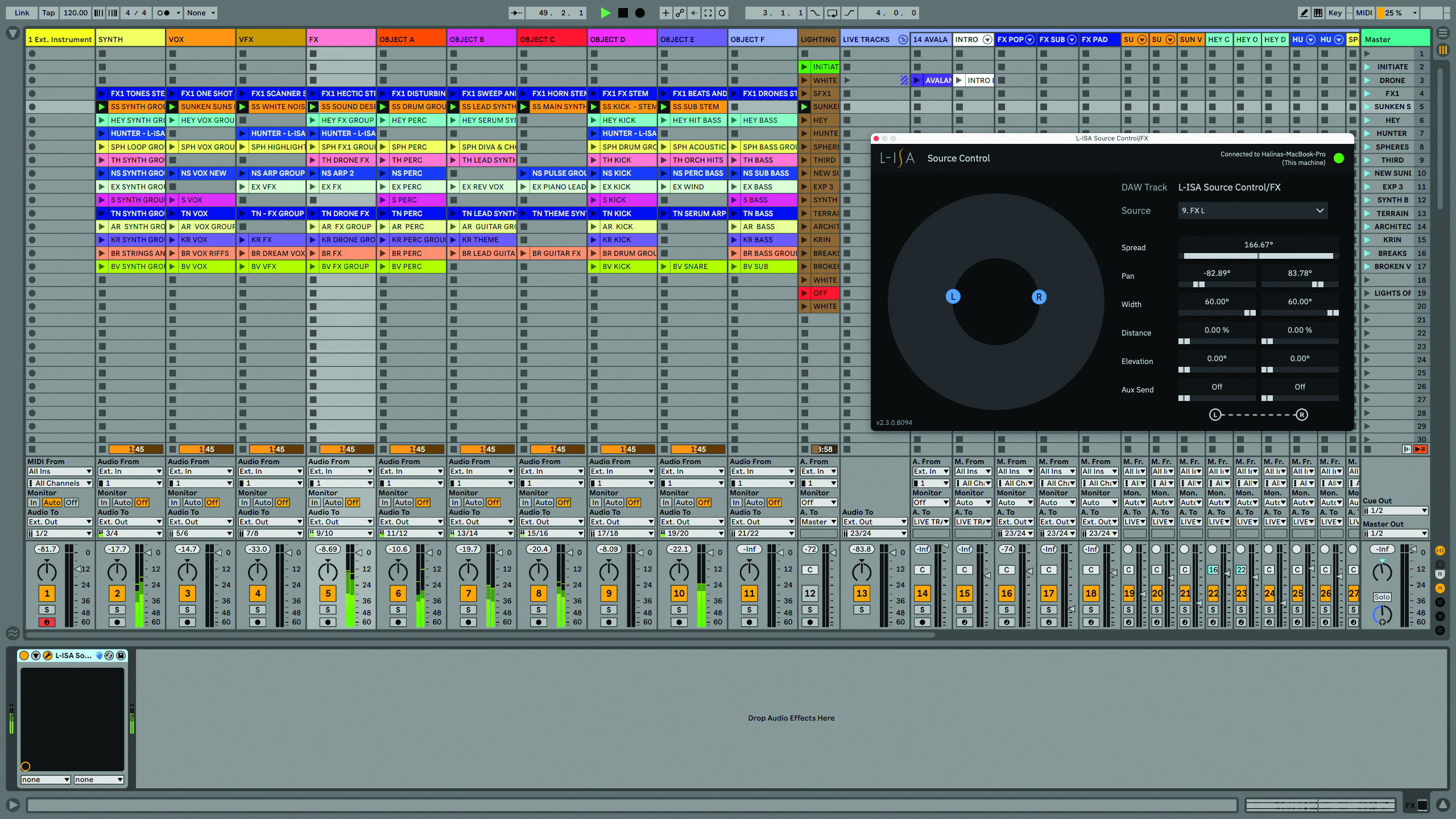
“The innovation that L-Acoustics have brought is binaural monitoring – it used to be you couldn’t use this software without a studio that had an immersive speaker array. But now the binaural monitoring can give you an impression of how it will translate into a venue through headphones. This is actually a big leap for a producer. It’s in my hands. I decide where the sounds are in the room, and how people experience the performance.
“The second major element of the show is the lighting, which is also automated using envelopes and automation in Live using a DMX system [industry-standard used to control lighting, and other hardware like smoke machines]. I have 512 channels each with its own fader. Each light is assigned a number of these channels and each channel has a different function. So, with a moveable light you can determine how much it pans and tilts forward and backwards. Then there’s the red, green, blue, colour mixing, and whether it’s always on, or strobing, and so on.
“There are probably about 60 channels of information to create the light shows. People appreciate that there is bespoke programming and the lighting created for each piece of music, so it’s not a generic, DJ-style lighting system. Another benefit of this system is that I can easily expand my setup by hiring further lights and copy and paste automation and other settings from my existing light setup.
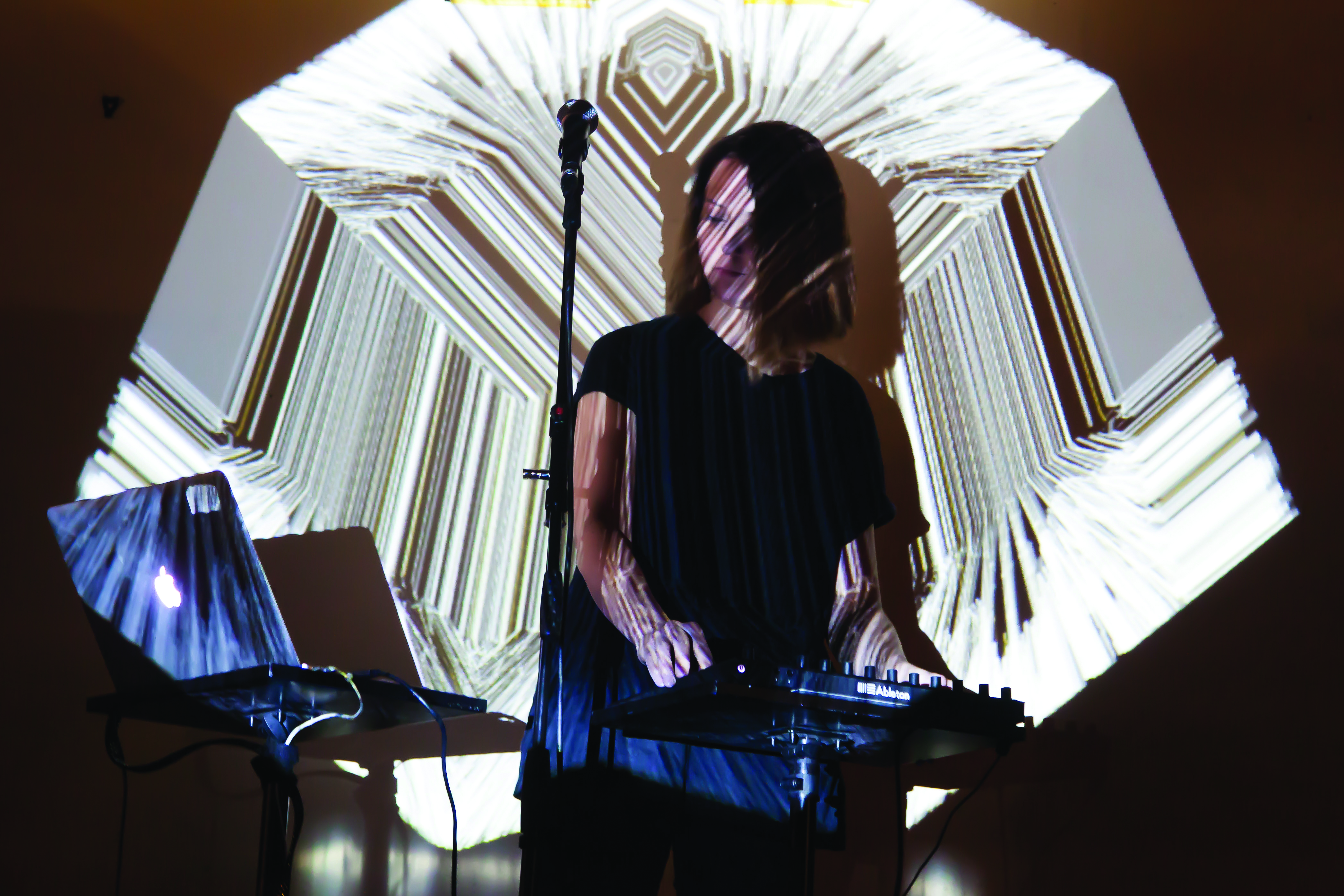
“All my music tracks are a bit left-of-centre and I want the live experience to be the same. So rather than simply providing visuals, I want to take people on a journey – the whole point of it is that the audience feel different coming out. It’s not about conforming to a genre, it’s about the experience and the music that feeds it.
“Someone described the live show as ‘part rave, part art happening’, and I couldn’t ask for a better descriptor in a way. It’s about the vibe of the people in the place and I try and create the show around them. It’s not around me. I try to stay quite anonymous in my performances. While it’s important for the audience to see the artist and know that they’re playing live, I prefer to let the music and visuals be the focus.
“I also like the performance to be in a space where it’s not the environment stamping itself onto the performance, but more that I’m stamping the project onto the environment. So for the A-V sets I’m looking at venues that have arts and music contexts and can act as more of a blank canvas, but also I have been talking to people about maybe dividing into two types of performance, like a rave set that I can play in a stereo environment that’s more for a club venue, and then a separate A-V set as these are much more intensive to put on. Moving on from here, my main goal is to take the show around the UK and also internationally, and looking at a longer form release later this year.”
Stay up to date with Halina Rice's new releases and tour schedule through her Instagram.
Halina Rice's top three plugins
1. Oeksound soothe2
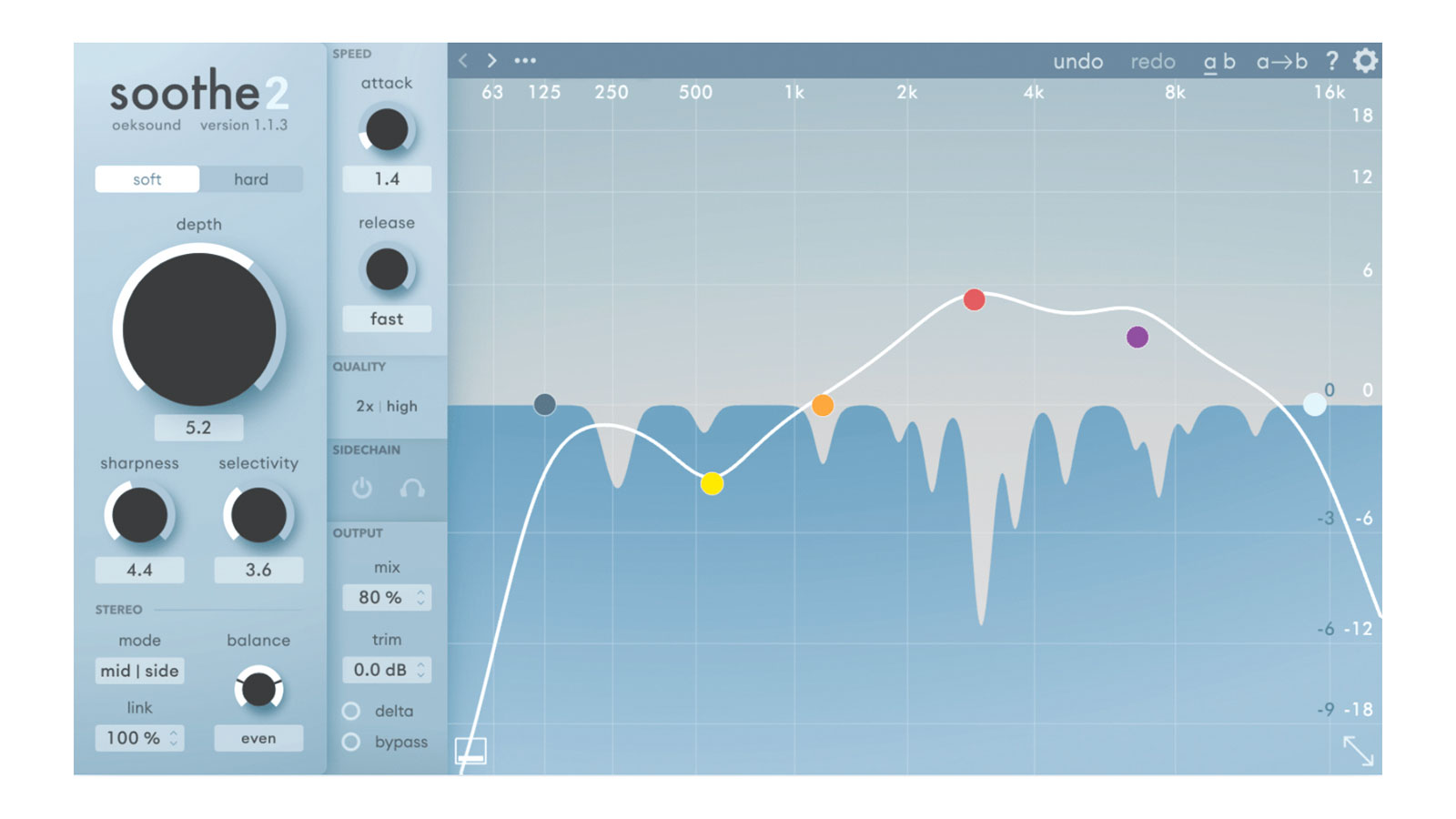
“This is a dynamic EQ plugin, but it’s much more than that, it can be used quite creatively. I used it for the lead line of Terrain (see Further Listening), where there’s a synth sound that’s almost like a vocal line. It sounded too harsh coming out directly from the synth, so I applied soothe2, fiddled with the settings, and it did, something – I don’t know how to describe it, something quite strange to the sound of it. It was almost as if the sound inverted itself somehow.”
2. PaulStretch
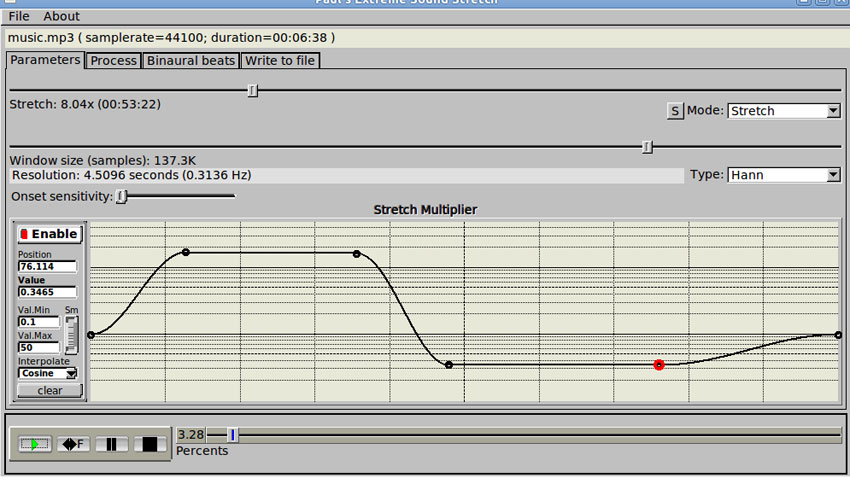
“This is one of my favourite plugins – it’s a really beautiful extreme stretch algorithm. You get this stunning cathedral-like effect. Everything sounds haunting and maybe a little bit religious. And I kind of like the juxtaposition of that with some driving basslines and drum breaks.”
3. Sound Guru The Mangle
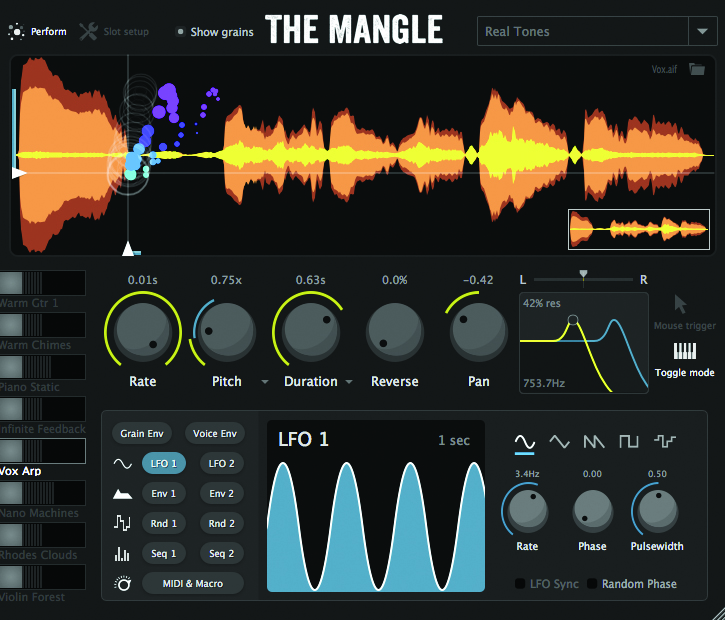
“The other one that I would really like to mention is The Mangle. It’s a granulator tool with lots and lots of parameters that you can play with, you can add envelopes and stuff to the way the grains are expressed.”
Further listening...
1. TERRAIN
“Terrain has been my most popular release so far. It’s four to the floor, so I guess it’s easy to relate to. When I released it, my Spotify users went way up! All of the synth lines, including the bass parts, were generated on the Roland SE-02, then I cut them up digitally and treated them with lots of effects.”
2. BREAKS
“I use a lot of Paulstretch [see Rice’s favourite plugins] – the slightly haunting voices in my music have all gone through an extreme stretch. You get this beautiful cathedral-like effect. It sounds even a bit religious. And I like the juxtaposition of that with some quite driving basslines and sampled drum breaks.”
3. SUNKEN SUNS
“My most recent release, and I wanted to concentrate on sound design; I spent a lot of time with noise generators in Reaktor, recording lots of audio that’s being created in a random way. Then I went through that and edited, maybe, like 50 to 100 pieces. And then I stitched that into the track, just so that each bar is a little bit unique, and positioning these to make full use of the stereo field.”


Computer Music magazine is the world’s best selling publication dedicated solely to making great music with your Mac or PC computer. Each issue it brings its lucky readers the best in cutting-edge tutorials, need-to-know, expert software reviews and even all the tools you actually need to make great music today, courtesy of our legendary CM Plugin Suite.
